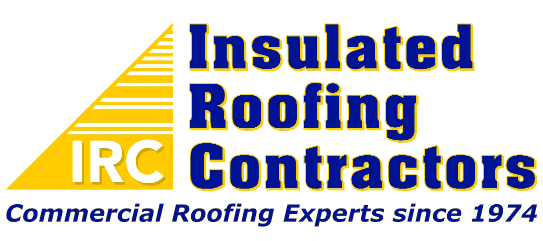WHICH FLAT ROOF IS THE BEST FOR YOU?
With so many different options available, many building owners don’t know which roofing system is the best for their building. Sometimes it’s hard to know which system you should install based on your exact needs because there are oftentimes too many different options. Keep reading for a quick review of several different commercial roofing systems to consider for your building.
Built-Up Roof (BUR)
BUR has become a pretty common roofing system thanks to it’s inexpensive price tag and insulation properties. Because it is made up of so many different layers, it does a great job insulating the building and retaining either hot or cold temperature on the inside. One thing to keep in mind with regards to this system is that it doesn’t work on all buildings because of its weight. The multiple layers really add up and some less structurally sound buildings may not be able to support a built-up roof.

Spray Foam
Spray foam is the “Cadillac” of the roofing industry. It can be more expensive, but provides greatly superior results in most cases. Its insulation, wind-uplift resistance, and ease of repair are second-to-none which makes it a very desirable roofing system. It is extremely fast and easy for an experienced worker to apply, which means when you purchase a spray foam roof, you are mostly paying for the material, not the labor to install. It does come with that higher price tag which can be restrictive for building owners with smaller budgets but when the money is available, this is a great system.
Modified Bitumen
Newer modified bitumen roofs are much safer than the older ones at application. Up until not too long ago, modified bitumen roofs were heated up with a blow torch and then heat-welded to the roof. This led to some buildings catching on fire and burning down, which is obviously unsafe. Newer modified bitumen roofs use the “peel and stick” method which is much safer.
These roofs are pretty good reflectors, meaning they can save you money on energy costs. They may not be as reflective as a white coating (below), but they are still better than say a metal roof.
One drawback of modified bitumen roofs is that they aren’t very scuff or wear and tear resistant, so roofs with a lot of foot traffic aren’t a good fit for this system.
PVC
PVC is a single-ply roofing system, and is just about the most popular roofing option over the last ten years. It can be installed pretty quickly and easily, and lacks water permeability, meaning it can resist ponding water. It provides similar benefits to spray-applied roof coatings (especially silicone), but it has one major drawback: seams.
PVC is applied in rolls on a roof, and those rolls have to be adhered to one another. This creates seams, and these seams can be prone to leaking, heat loss, or pulling apart. This is a big risk of PVC systems, but they still remain very popular.
EPDM
A single-ply option comparable to PVC, EPDM is a rubber compound rather than plastic (like PVC). EPDM roofs have built a good reputation by providing durable, long-lasting performance. They also have seams like PVC, and these seams can become vulnerable to leaks in the long term. Thanks to their seams and the overall makeup of this material, they are one of the more labor and maintenance-intensive commercial roofing systems.
Spray-Applied Roof Coating
Spray-applied roof coatings provide a seamless membrane over top of your existing roof. They aren’t a standalone roofing system, but they go over top of the whatever existing roof you have. Spray-applied coatings can be silicone, acrylic, urethane, or some other less common options. Some coatings can resist ponding water, while others can’t, so you have to research that.
Coatings don’t provide much insulation for your building, but they are highly reflective, which means they keep your building cooler in the summer and save you money. They are also a very quick and easy install which requires no tear-out, so it’s a painless system to install.
Conclusion
There are many more flat roof options available than just the ones given above: metal, asphalt, TPO, and more. If you’d like more info on any of the systems above, or even a system not mentioned, give us a call.
